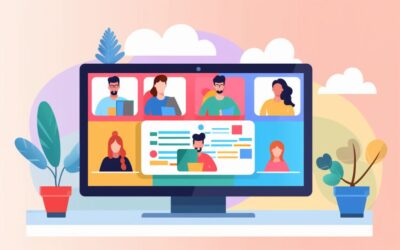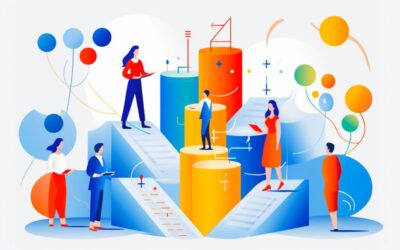The year 2020 hasn’t exactly been easy for human resources. Having to adapt to a totally unpredictable health crisis, the HR function needed to take on new responsibilities and support the implementation of new work methods. In this uncertain environment, anticipation is no longer enough: you have to be absolutely responsive and embrace change. This is the conclusion of this study conducted by Deloitte, which surveyed 6,000 professionals from multiple sectors—more than half of whom were senior executives—to reveal the next HR trends.
According to this study, companies must take advantage of the crisis to shape the future of work.
To help them do so, Deloitte has identified five major trends that will shape human resources in 2021:
- Designing work for wellbeing
- Beyond reskilling: Unleashing worker potential
- Superteams: Where work happens
- Governing workforce strategies: Setting new directions for work and the workforce
- Accelerating the shift to re-architecting work
1) Designing work for wellbeing
In 2021, improving well-being in the workplace is a major priority for both employees (#3) and managers (#8). In order to meet these growing expectations, the company must give greater priority to this subject.
Also read: Human Resources: The 5 priorities for 2021 (according to Gartner)
One thing is certain: the shift to teleworking has had a rather positive impact on QWL, and the majority of employees feel that this way of working should continue to be supported in the post-COVID era.
In order to perpetuate telework, 39% of the executives surveyed believe that it is necessary to introduce digital collaborative platforms. Other practices can also contribute to this, for example:
- giving employees more freedom to choose their work methods
- establishing new scheduling and meeting rules
- training managers
- providing home Internet access
Also read: Changing Work Modes: What Role for QWL?
To improve wellbeing in the workplace, the study encourages leaders to adopt an approach that hinges on three dimensions: the individual, the team, and the organization, all driven by five types of change:
- cultural:
- encouraging micro-breaks
- proactively articulating needs
- relational:
- creating teams based on individual work preferences
- regularly contacting colleagues
- operational:
- integrating the “well-being” factor into working time, performance evaluation and rewards programs
- letting teams adopt work practices best suited for them
- physical:
- creating a work environment that meets the physical and emotional needs of employees
- using the office to promote collaboration
- virtual:
- using new technologies, such as virtual reality, to teach employees how to manage stressful situations
- using connected applications and objects to help employees manage distractions and stay alert
2) Beyond reskilling: Unleashing worker potential
To adapt to the crisis, employees had to be creative, train and sometimes take on new responsibilities.
Thus, 72% of managers identify adaptability as the number one skill for dealing with future disruptions. However, only 17% say that their employees are truly ready to adapt and train themselves.
Also read: [Expert Voice] Sandrina Correia (HR Director at EVA Group): How Has HR Adapted to Lockdown?
According to Deloitte, the best way to unleash the potential of employees is to let them choose how they can contribute and explore their preferred fields.
Here are several actions to be implemented to achieve this:
- Change the equation between supply and demand
- Create “opportunity marketplaces,” i.e. platforms that give visibility to training and networking opportunities to facilitate skills development
- Imagine jobs that can continually reinvent themselves
- Reward employees who identify critical skill needs and reinvent themselves to meet them
- Help employees train, such as with solutions like Learn In
- Focus resource planning on potential
- Empower employees by letting them reimagine how work should be organized
- Use AI-powered technologies to make sense of unstructured data
- Move towards real-time dynamic actions
- Collect and leverage data that gives you real-time visibility into employee skills, ask employees how they want to develop their jobs—and then use their answers to encourage them to choose training that’s useful to them and the company
- Group individuals into teams to boost their performance
3) Superteams: Where work happens
To reorganize work in a more humane way, managers need to create super teams made up of employees and innovative machines. Thanks to their complementary capabilities, these super teams will be able to get results faster and generate new ideas.
However, super teams are still far from becoming an organizational strategy. Last year, the majority of people surveyed by Deloitte saw artificial intelligence as an automation tool, and thus as a potential threat. However, attitudes are changing: This year, those executives surveyed now recognize that technology can help them improve their own skills.
Thus, the study identifies three main key factors of work transformation:
- Creating a corporate culture that celebrates growth, adaptability and resilience
- Developing employee skills through training, reskilling and mobility
- Implementing new technologies
To thrive on a daily basis, super teams need a stimulating work environment. Here are some good practices to create this environment:
- Set bold goals and define new strategies
- Use new technologies to optimize the performance of employees—for example, by facilitating collaborative work, creating new knowledge, and personalizing the work experience
- Make creation of super teams an imperative throughout the organization
4) Governing workforce strategies: Setting new directions for work and the workforce
Access to forecast employee data is essential for anticipating change. However, only 11% of companies surveyed in 2020 say they are able to obtain this information in real time.
To better understand the concerns of employees in 2021, Deloitte is encouraging organizations to adopt a more dynamic and action-oriented talent management strategy. An approach that requires consideration of three imperatives:
- Capitalizing on the potential of employees
First of all, the company must be able to assess the manager’s ability to cultivate the skills of its teams. Indeed, 60% of managers believe that leadership is the number-one priority in preparing for an uncertain future. However, “effective” leadership is no longer simply a matter of setting guidelines and ensuring that they are respected. To anticipate the unexpected, a good manager must coach his employees, group them into teams, and stimulate their ability to learn and adapt.
- Leverage the entire talent ecosystem
In order to develop the roles and responsibilities of each individual, human resources must have an overview of their talent ecosystem. To do this, they need to understand why some employees have left. What’s more, the HR function must focus on creating and maintaining relationships with various stakeholders throughout the ecosystem, whether they’re employees on permanent or fixed-term contracts, part-time employees, or even former employees. This will make it easier for the company to solicit them when it needs them.
- Translate values into shares
In addition, the company needs to collect real-time data on both employees and external stakeholders. By improving its understanding of its environment, it can better align its actions with the values it has defined. Furthermore, this information can help the company challenge whatever actions it takes and determine whether it needs to reorient its strategy.
5) Accelerating the shift to re-architecting work
The COVID-19 crisis has shown that the role of human resources goes far beyond the formalization and application of HR processes. The HR function has indeed an increased responsibility: reorganizing work in a more agile way all the while taking collaborators more into account.
One of the reasons for this new mission is increased confidence in human resources. For example, 96% of HR managers and 88% of senior managers have confidence in the ability of human resources to cope with future changes.
But all has not yet been won. To assume their new role, human resources must make several changes:
- Adopt a results-oriented mindset
- Work closely with all the company’s stakeholders, including the IT department
- Consider work reorganization as a continuous activity that must be integrated into the company’s routine maintenance
- Putting super teams at the centre of new ways of working
- Proactively recognize and manage the cultural implications of these ways of working
- Develop talent by focusing on skills such as analysis, review, problem-solving and social intelligence
*
* *
In 2021, human resources must completely reorganize work by focusing on improving employee well-being, developing skills, creating super teams, and collecting data in real time.
To do this, they must adopt an enterprise mindset and take advantage of new technologies, as these will help them implement new ways of working and optimize team performance.
For example, they can deploy a collaborative platform to simplify remote communication and collaboration. Is this on your to-do list, but you don’t know where to start? Consult our cheat sheet: “8 steps for choosing your collaborative platform.”
Download Cheat Sheet
In this cheat sheet, you’ll find the eight steps for choosing the most suitable collaborative platform, including the key elements for properly identifying your needs and the determining criteria for comparing the best solutions on the market.
_
Author: Emmanuelle Abensur



